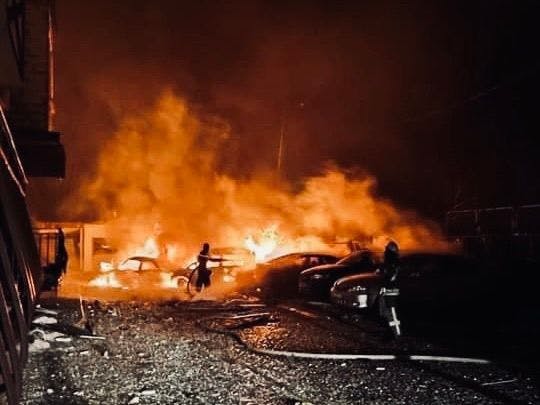How to Preserve Digital Evidence from War and Conflict Zones?
,Russia’s war on Ukraine has been raging for more than 100 days now. Due to the lack of reporters on location, many of those who want to assess the situation depend on social media content. A key challenge in this context: gaining access to this content – and archiving it before it is gone.
Journalists, fact-checkers, human rights organizations as well as security personnel have been working overtime to get an idea of what is happening on the ground in Ukraine. In order to analyze, verify, and archive such social media content, a precondition is–of course–that the material is actually available. This is where the respective platforms come in.
The dilemma of content removal and the necessity of preservation
Due to rules, regulations, and their own terms and conditions, most social media companies remove a lot of material from public view these days. This specifically concerns content that is considered graphic, disturbing, or distressing. Analysis and subsequent removal is often done (or at least assisted) by algorithms, due to the sheer volume of content in question. While this approach is understandable on the one hand (who wants to expose users to traumatizing images or get in legal trouble?), it is highly problematic on the other hand. That is because the material is not brought to attention or simply disappears for those who need to document and investigate it.
Preserving digital content from war and conflict zones is nevertheless vital. Not only for journalists and analysts trying to make sense of the current situation "on the ground", but also for prosecutors, for historians, for posterity. Ideally, it would be a coordinated, well-funded process, facilitated by the platforms, supported by technology, embraced by all stakeholders.
Recommendations–how to move forward
The war in Ukraine once again highlights the important role of digital content analysis and preservation. It also makes evident that content removal poses a major problem. In this context, we would like to propose a number of actions:
- Social media platforms should be obliged to preserve and systematically annotate material surrounding war and conflict, especially if it is removed from public view (for whatever reason). AI-based tools (think: pattern matching, object recognition, scene detection) can significantly support the process.
- All relevant content should be made available to researchers, historians, prosecutors and other stakeholders who conduct activities of public interest and relevance, following clearly defined access criteria.
- Projects dealing with digital content analysis, verification and annotation of war/conflict material should be supported and funded adequately to advance the topic and related technologies.
- Common archiving standards (metadata, annotation, verification, access, transferability) should be established and agreed upon; this includes making annotations machine-readable, working across technical platforms and making sure as much content as possible is verified.
Resources
If you would like to learn more about the subject of war/conflict documentation, we suggest to have a look at the work of:
- Mnemonic (focus: Sudan, Syria, Yemen)
- Bellingcat (focus: Ukraine)
- Cen4infoRes (focus: Ukraine)
The following articles, reports, and papers have more on the problem of disappearing sources and best practice in terms of archiving:
- Hadi Al Khatib and Dia Kayyali: YouTube Is Erasing History. New York Times (2019)
- Yvonne Ng: How to Preserve Open Source Information Effectively. In: Dubberley, Sam; Koenig, Alexa; Murray, Daragh (eds.) (2020): Digital Witness. Using Open Source Information for Human Rights Investigation, Documentation, and Accountability. Oxford University Press
- Jeff Deutch and Niko Para: Targeted Mass Archiving of Open Source Information: A Case Study (also in: Digital Witness)
- Human Rights Watch (2020): Video Unavailable. Social Media Platforms Remove Evidence of War Crimes.
- Human Rights Center at UC Berkeley School of Law (2021): Digital Lockers -- Archiving Social Media Evidence of Atrocity Crimes.
- Fred Abrahams (2022): When War Crimes Evidence Disappears. Human Rights Watch, 25 May 2022.
Photo (Kharkiv bombardment) via Wikipedia/Ukraine Government
